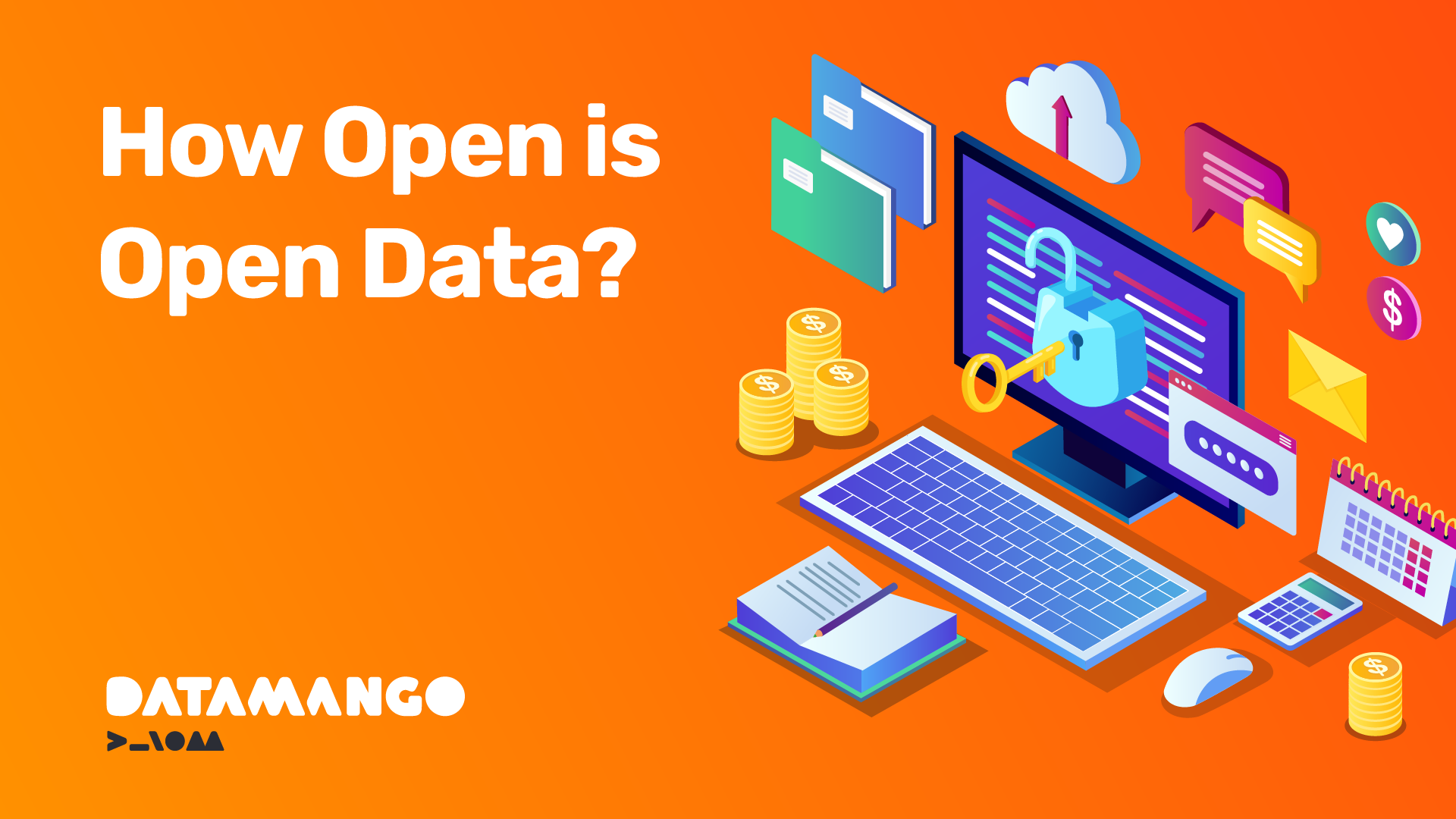
How Open is Open Data?

by Dave Westbrook,
28-Oct-2021
Open data is... data which is open.
Open? Like an open door?
Yes.
There, that's clear isn't it?
Well... no... in the context of open data we mean information—data, creative content, apps, etc—which can be used and reused by anyone without requiring direct permission from the source. Users of the data usually (with some exceptions—more on this later) don't need ask permission or even pay for it, they can simply utilise it in their own projects.
There's Always a 'But...'
The extent to which users are able to utilise open data depends on the license under which it is published. Data licensing is done for a number of reasons. Fundamentally, open data licenses exist to protect publishers and creators, but they also exist to create value. So if data (or content) is truly open, how can it protect creators—usually through usage restrictions—and create value for creators and users? And if data is open, how does it protect personal information?
This post looks at the purpose of open data, explores two common open data licenses, and finally considers how to identify whether a license is truly open by examining the finer points of the agreements which exist between user and creator.
The Purpose of Open Data
The purpose of open data is to make information readily available to everyone, for free. Open data is used in all sorts of ways, including campaigning, business planning and market research. Open data can also help make public services more efficient and effective by making the data accessible to everyone. Open data benefits not just developed nations—it's relevant for developing countries too:
"Opening up government data can encourage the building of more interconnected societies that better meet the needs of our citizens and allow innovation, justice, transparency, and prosperity to flourish, all while ensuring civic participation in public decisions and accountability for governments."
But key to the understanding—and often a source of confusion—of open data is the way ownership is determined, or licensed, by the publisher or creator. This extends to the user of that data and what they are permitted to do with it. Ownership and permissions are settled through the terms of a license agreement, sometimes called the copyright notice.
Common Open Data Licenses
Access to and use of open data continues to increase, driven by the proliferation of Creative Commons licensing across the internet, and bolstered by licenses created through government legislation, such as the Open Government License (OGL). The OGL was set up by the UK Government as an effort to make the use of public information as non-restrictive as possible.
Creative Commons is a non-profit organisation that enables the sharing and use of creativity and knowledge through free legal tools. It is best suited for improving data accessibility, distribution of educational and government data, and open access publishing of creative content. There are six common types of licenses within Creative Commons:
- Attribution
- Attribution Share Alike
- Attribution No Derivatives
- Attribution Non Commercial
- Attribution Non Commercial Share Alike
- Attribution Non Commercial No Derivatives.

Creative Commons License Spectrum. Source: Wikipedia. Licensed under the Creative Commons Attribution 4.0 International.
While these license types share one common aim—to provide otherwise copyrighted information freely—their license terms vary, and usually require some level of attribution. This means providing a source to the license terms and only redistributing content, or derivatives of it, under the same or similar terms.
The UK's Open Government License was created to provide an "appropriate legal framework for the re-use of public sector information" while balancing accessibility, transparency and accountability. It's design is flexible enough to suit both Public Sector Bodies (PSBs) and private publishers, but its restrictions are more stringent than the majority of Creative Commons licenses.
The Open Government License offers unlimited distribution rights, attribution frameworks, and allows for using the data in commercial products. One important caveat to the OGL is that it does not cover any personal data held in the information—there are separate legislative frameworks which cover personal data, such as GDPR.
Identifying Open Licenses
Deciding to use open data or content depends largely on the license terms and brings us back to the question of "how open is open data?"
As with most legal frameworks there is no simple answer. It depends largely on what you are using the data for. This blog post is a good example—we're using and re-sharing the Creative Commons License Spectrum and attributing it with a link to the license and source. It is purely for informational purposes.
But Datamango utilises open data across many projects, published under a variety of different licenses. How do we identify the license, establish how we can use the data, and what is best practice for complying with the license terms? Here are our top tips:
- Do Your Research: Open data licenses are available directly from publishers and are often complex on the terms of how the information can be reused. Spend time familiarising yourself with the license—if you're unsure try searching for plain english versions, contacting the creator directly, or consulting a legal expert before using the data in production.
- Clear Communication is Crucial: Ensure your research provides clear answers to relevant stakeholders about what open content can be used for, as well as which licences are required. An Open Data Licence Summary document, distributed to stakeholders, can help you manage that.
- Check the Conditions: Open content rarely restricts who can access the information unless it contains Personally Identifiable Information (PII), so anything anonymised or aggregated need not require special treatment. Where attribution is necessary, ensure this is feasible for your project.
- ELI5: When it comes to open data licenses there are rarely absolutes; each one varies in its purpose and provisions. Ask yourself if you can explain briefly how open the license terms are. Open licenses are generally aimed at promoting open data, open content or open government, but there are always exceptions.
- Remember the "Why": Don't forget that open data licenses exist to provide value to the data by allowing it to be used in different ways. So if you're worried about compliance issues, remember open licenses are designed with that end goal in mind. Know what it is.
That's it! How open is open data? Well the answer—as usual—is "it's complicated".
If you need help understanding how to utilise open data in your projects, get in touch now...




